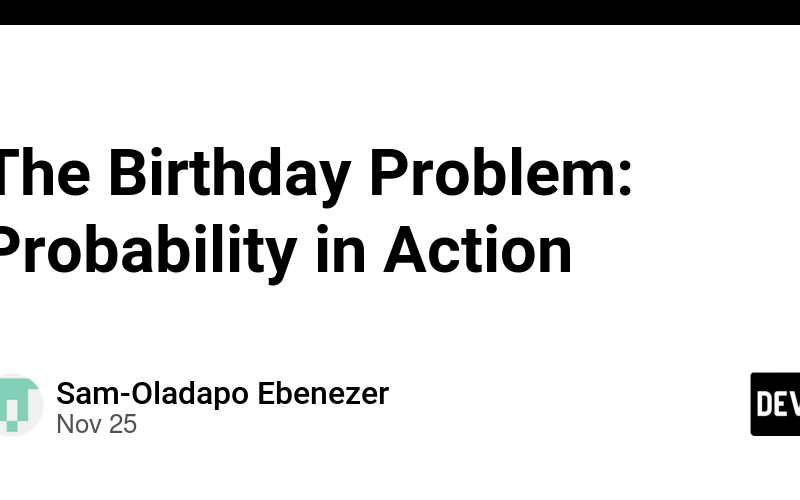Hi Guys,
I recently read a cool article about the birthday problem, and I think I’m going to make a blog post on it.
What Does the Birthday Problem Entail?
Let’s assume you’re in a room with just 23 people—there’s actually a 50-50 chance that two of you have the same birthday.
Understanding the Mathematics Behind the Problem
We can try to figure out the chance that people share the same birthdays, but it’s actually easier to calculate the chance that nobody shares a birthday and subtract it from 1 (Remember probability!).
How Does That Work?
Quick Assumptions:
- The first person can have any birthday out of 365 days.
- The second person needs to avoid that day, so they have 364 days to choose from.
- The third person needs to dodge both birthdays, so they’ve got 363 days, and it keeps going.
Breaking Down the Probability
1. Total Possible Outcomes
If there are n people and 365 days in a year, the total number of possible birthday combinations is: 365n
2. Favorable Outcomes
The number of favorable outcomes is:
365 × 364 × 363 × ... × (365 - n + 1)
3. Probability of No Shared Birthday
The probability that no two people share a birthday is the ratio of favorable outcomes to total outcomes:
P(No shared birthday) = (365 × 364 × ... × (365 - n + 1))/(365n)
Which is the same as:
P(No shared birthday) = 365! / ((365 - n)! × 365n)
4. Probability of at Least One Shared Birthday
P(At least one shared birthday) = 1 - P(No shared birthday)
Calculated Results
Here are some surprising results when we calculate the probabilities:
- With just 23 people, you get about a 50% chance of a birthday match.
- With 30 people, there’s a 70% chance.
- With 50 people, that’s a 97% chance.
Why Does This Matter for Software Developers?
This problem has applications far beyond birthdays! It’s used in fields like cryptography and hashing algorithms.
Use Cases in Real Life
- Blockchain: Cryptographic hash functions (like SHA-256) must resist collisions to ensure security.
-
URL Shorteners: Shortened URLs (e.g.,
bit.ly) use hashes. Detecting and managing collisions is crucial for ensuring uniqueness. - Data Deduplication: Identifying duplicate records in large datasets relies on hashes and understanding collision probabilities.
This principle is crucial in computer security, especially in cryptography, where it helps design better ways to protect data and spot potential weaknesses.
Practical Example: Hash Function Collision Detection
The Birthday Problem helps estimate the probability of hash collisions in systems like databases or cryptography.
Example: Detecting Collisions in a Hash Space
Imagine a database system where each record is assigned a unique hash. The Birthday Problem allows us to estimate the likelihood of two records having the same hash.
import random
def simulate_collisions(hash_space, num_entries):
hashes = set()
for _ in range(num_entries):
hash_value = random.randint(0, hash_space - 1)
if hash_value in hashes:
return True # Collision detected
hashes.add(hash_value)
return False # No collisions
# Parameters
hash_space = 2**16 # 16-bit hash space
num_entries = 100
# Simulate
collisions = sum(simulate_collisions(hash_space, num_entries) for _ in range(10000))
print(f"Collision probability: {collisions / 10000:.2%}")
Conclusion
The Birthday Problem is an example of how probability can defy intuition. Its implications stretch from everyday curiosities to critical areas like cryptography and data science. Understanding this principle helps us gain deeper understanding into how probability shapes the world around us.
Source link
lol

